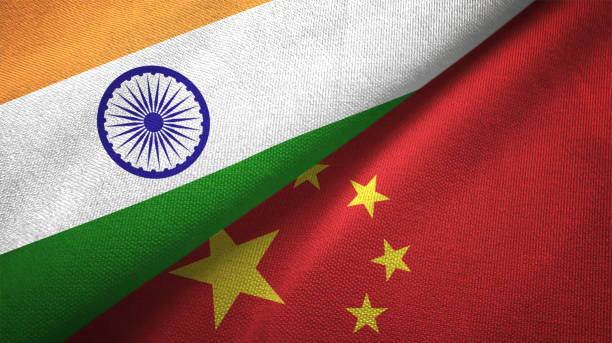
The recent release of a new map by the Chinese Ministry of Civil Affairs, asserting territorial claims over 30 areas in the Indian state of Arunachal Pradesh, marks yet another contentious development in the complex relationship between India and China. The renaming and incorporation of these regions into the Chinese province of Zangnan hold considerable geopolitical ramifications, especially in light of India’s upcoming general elections. This action, alongside China’s prior advances in Ladakh and its assertions over India’s Aksai Chin territory in 2023, highlights the pressing necessity for India to adopt a comprehensive and strategic approach to protect its sovereignty and national interests. In analyzing this situation, it is crucial to consider the political, economic, and security dimensions, offering realistic insights aimed at guiding decision-makers.
From a political standpoint, China’s assertion of territorial claims in Arunachal Pradesh adds strain to an already delicate bilateral relationship. India has consistently rejected such claims, asserting its sovereignty over the region. The timing of this move, coinciding with India’s general elections, raises suspicions of political motives aimed at influencing domestic dynamics. Such provocations risk exacerbating nationalist sentiments within India, potentially influencing electoral discourse and policy responses. Therefore, Indian policymakers must navigate this challenge with strategic foresight, balancing assertiveness with diplomatic engagement to safeguard national interests.
In Ladakh, Chinese incursions prompted a robust response from New Delhi, highlighting the vulnerability of India’s border regions and the need for enhanced security measures. The standoff in Ladakh in 2023 highlighted the vulnerability of India’s border regions and the need for enhanced security measures. Similarly, China’s claims on Aksai Chin, spanning over 38,000 square kilometers, holds immense strategic importance due to its proximity to the Karakoram Pass and its role in connecting Tibet with Xinjiang. This undermines India’s sovereignty and security interests in the region. The Chicken Neck Corridor emerges as a critical geopolitical chokepoint, connecting India’s northeastern states with the mainland. Its significance becomes even more pronounced amidst Indo-China relations, with China’s assertive actions along the Line of Actual Control and territorial claims over regions like Arunachal Pradesh, Ladakh, and Aksai Chin. Any disruption to the corridor could isolate India’s northeastern states, compromising its ability to defend its territory
Economically, the territorial dispute threatens to impede bilateral trade and investment between India and China. Both countries are significant trading partners, with substantial economic interdependence. However, territorial tensions can undermine trust and confidence, leading to disruptions in economic ties. Indian businesses operating in China may face increased regulatory scrutiny and market access barriers, while Chinese investments in India could encounter heightened political risks. To mitigate these challenges, stakeholders must prioritize dialogue and confidence-building measures, fostering an environment conducive to economic cooperation despite geopolitical tensions. India must reduce its dependence on China and diversify its trade and investment partnerships to mitigate the risks posed by geopolitical tensions. According to recent data, India’s trade deficit with China stood at approximately $45 billion in 2022, highlighting the urgent need to rebalance trade relations and reduce reliance on Chinese imports. Strengthening domestic manufacturing capabilities and promoting indigenous industries will not only boost India’s economic resilience but also reduce its vulnerability to external pressures.
Security-wise, China’s territorial assertions in Arunachal Pradesh raise concerns about regional stability and military escalation. The disputed region shares borders with Tibet and Myanmar, areas of strategic importance for both India and China. Heightened militarization and border incursions could escalate tensions, risking localized conflicts with broader regional repercussions. With China’s assertive actions along the Line of Actual Control (LAC) and its territorial claims over regions like Arunachal Pradesh, Ladakh, and Aksai Chin, India’s northeastern states become particularly vulnerable. Any disruption or threat to the Chicken Neck Corridor could sever the land link between mainland India and its northeastern states, thereby isolating these regions and compromising India’s ability to defend its territory. Given the region’s potential for growth and its strategic location as India’s gateway to Southeast Asia, safeguarding the Chicken Neck Corridor assumes paramount importance for India’s broader economic interests and connectivity initiatives, such as the Act East Policy. India’s military posture in the region must remain vigilant yet restrained, avoiding actions that could escalate hostilities. Diplomatic channels must be kept open to prevent misunderstandings and de-escalate potential crises, prioritizing peaceful resolution through dialogue and negotiation.
In navigating the multifaceted challenges posed by China’s territorial claims and encroachments, Indian decision-makers must adopt a comprehensive approach that combines political resolve, economic pragmatism, and security preparedness. This entails asserting India’s sovereignty while engaging in diplomatic initiatives, such as the Special Representatives Dialogue, to de-escalate tensions and foster trust with China. Simultaneously, diversifying economic partnerships and reducing dependency on China can enhance India’s resilience. Furthermore, diplomatic channels should be leveraged to seek peaceful resolutions to territorial disputes, alongside fostering partnerships with like-minded countries such as the United States, Japan, and Australia to counterbalance China’s assertiveness in the Indo-Pacific. Strategic imperatives for safeguarding the India involve bolstering military presence and infrastructure, prioritizing diplomatic engagement through mechanisms like BPMs and WMCC, and investing in connectivity and infrastructure development in northeastern states. Initiatives like the Bharatmala Project and the Kaladan Multi-Modal Transit Transport Project are pivotal in strengthening India’s strategic position and resilience against external pressures.
In conclusion, the Indo-China Border Disputes stands as a linchpin in India’s security architecture and geopolitical calculus, present a complex challenge for India, with far-reaching implications across political, economic, and security domains. As India approaches general elections, prudent leadership demands a nuanced approach that prioritizes national interests while upholding principles of diplomacy and cooperation.
By The European Institute for International Relations















